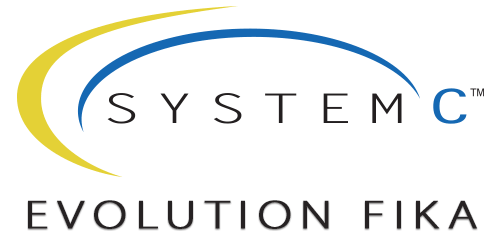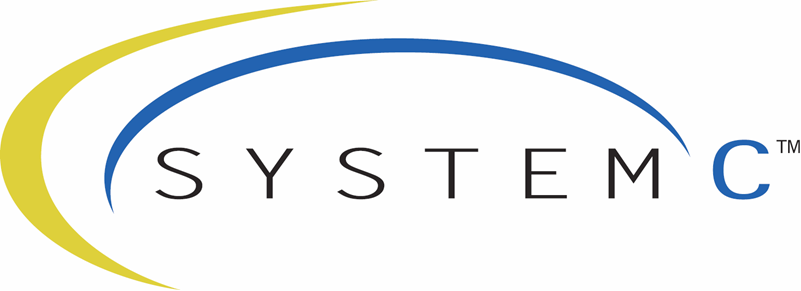SystemC Evolution Fika - 15 September 2022
Workshop on the Evolution of SystemC Standards
The SystemC Evolution Fika is a series of online workshops to discuss the latest SystemC developments and applications. We refer to these workshops as fikas, to honor the fika tradition of sharing a coffee, slowing down a bit, and talking about things that we care about.
Organization Team
- Ola Dahl, Ericsson (Chair)
- Martin Barnasconi, NXP
- Jerome Cornet, STMicroelectronics
- Christian Sauer, Cadence
- Mark Burton, Qualcomm
- Peter de Jager, Intel
Agenda
Main theme of the event: Safety-related Use Cases of SystemC-based Virtual Prototypes
| Time (CEST) | Title | Presenter(s) | Affiliation(s) |
|---|---|---|---|
| 16:00 - 16:15 | Introduction Presentation | Video |
Ola Dahl | Ericsson, Stockholm, Sweden |
| 16:15 - 16:45 | A fault-injection methodology for the system-level reliability analysis of computing systems modeled in SystemC Abstract | Presentation | Video |
Antonio Miele | University Politecnico di Milano, Italy |
| 16:45 - 17:15 | Dynamic Fault Injection with SystemC AMS for Quantitative Safety Verification Abstract | Presentation | Video |
Thomas Markwirth | Fraunhofer IIS/EAS, Dresden, Germany |
| 17:15 - 17:45 | A Scalable Platform for QEMU Based Fault Effect Analysis for RISC-V Hardware Architectures Abstract | Presentation | Video |
Peer Adelt | Heinz Nixdorf Institut/Universität Paderborn, Paderborn, Germany |
| 17:45 - 18:00 | Q&A and Closure Presentation | Video |
Ola Dahl | Ericsson, Stockholm, Sweden |
Abstracts
A fault-injection methodology for the system-level reliability analysis of computing systems modeled in SystemC
Presenter: Antonio Miele, Ph.D., Politecnico di Milano, Italy
Fault injection is the commonly-used strategy for evaluating the reliability of a mission-/safety-critical computing system in the various phases of the design flow. Depending on the specific phase of the design flow fault injection is employed, it is required to define 1) fault models, describing the effects of physical faults in the specification/implementation of the computing system, 2) fault injection techniques actually corrupting the specification/implementation of the computing system to simulate/emulate the fault occurrence, and 3) error analysis strategies to study the effects of faults on the main outputs and within the system. This talk provides an overview of our past experiences in defining a fault injection and analysis framework integrated in a SystemC virtual simulation platform for multicore computing systems.
Dynamic Fault Injection with SystemC AMS for Quantitative Safety Verification
Presenter: Thomas Markwirth, Fraunhofer IIS/EAS, Dresden, Germany
In this presentation we demonstrate how SystemC AMS can be used for quantitative safety verification of a Battery Management System (BMS). We start out by presenting our technology for dynamically introducing fault structures into SystemC AMS models at runtime. The injection is done at the beginning of the simulation by dynamically rewiring the involved netlists. During the simulation, faults can be activated or deactivated triggered by sequences or statistically. We then show how this feature can be applied in quantitative safety verification, e.g. to determine the diagnostic coverage (DC) of a safety mechanism.
More information:
- Dynamic fault injection into digital twins of safety-critical systems (DATE, 2021)
- Dynamic fault injection for system level simulation of MEMS - A design method for functional safety (DTIP, 2018)
A Scalable Platform for QEMU Based Fault Effect Analysis for RISC-V Hardware Architectures
Authors: Peer Adelt, Bastian Koppelmann, Wolfgang Mueller, Christoph Scheytt
Presenter: Peer Adelt, Heinz Nixdorf Institut/Universität Paderborn, Paderborn, Germany
Fault effect simulation is a well-established technique for the qualification of robust embedded software and hardware as required by different safety standards. Our article introduces a Virtual Prototype based approach for the fault analysis and fast simulation of a set of automatically generated and target compiled software programs. The approach scales to different RISC-V ISA standard subset configurations and is based on an instruction and hardware register coverage for automatic fault injections of permanent and transient bitflips. The analysis of each software binary evaluates its opcode type and register access coverage including the addressed memory space. Based on this information dedicated sets of fault injected hardware models, i.e., mutants, are generated. The simulation of all mutants conducted with the different binaries finally identifies the cases with a normal termination though executed on a faulty hardware model. They are identified as a subject for further investigations and improvements by the implementation of additional hardware or software safety countermeasures. Our final evaluation results with automatic C code generation, compilation, analysis, and simulation show that QEMU provides an adequate efficient platform, which also scales to more complex scenarios.
